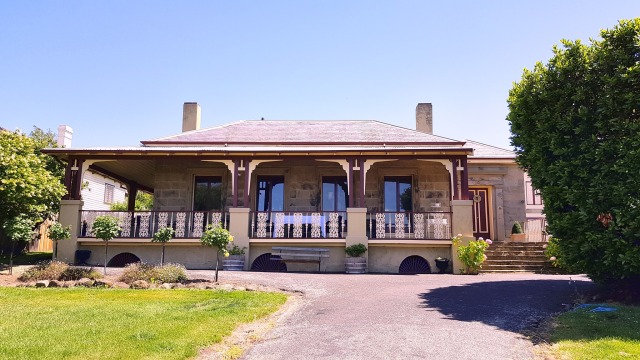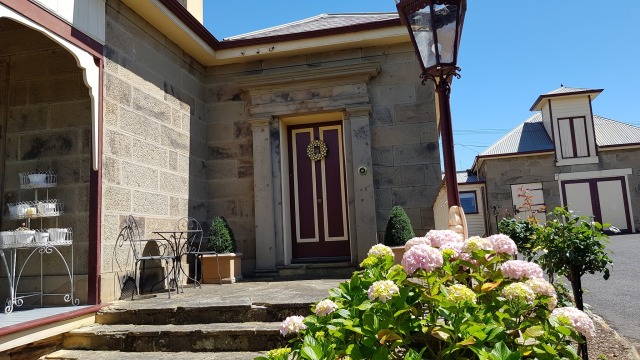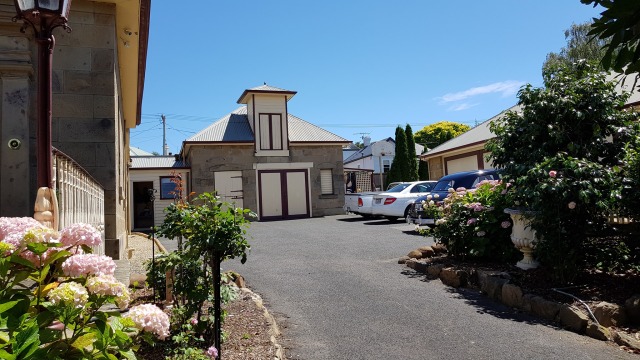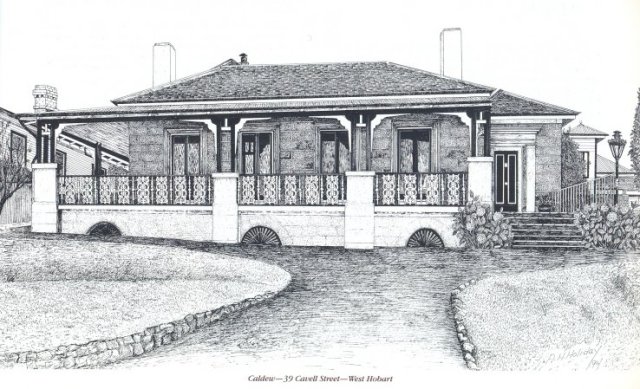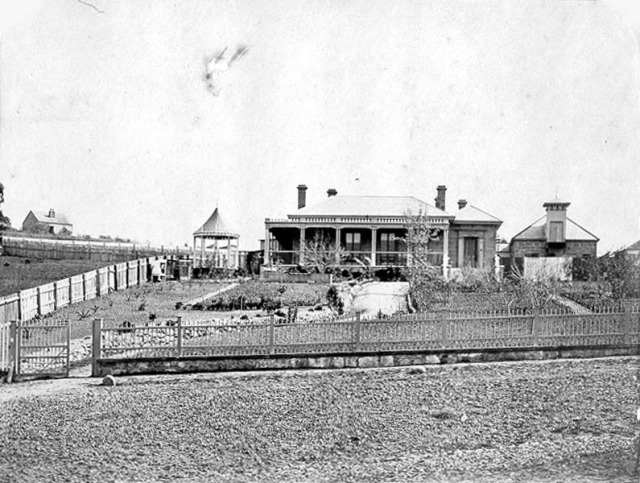CALDEW
Unlike so many fine old houses in Hobart, Caldew still has breathing space. It sits at the top of a rise in Cavell Street and, between it and the street, there is room enough for the drive to wander a little as it approaches the house, and also room for an enormous willow and a number of fruit trees on the way. Entry from the street is through the original Huon pine fence.
The house has been there for more than 130 years, but has been owned by only two families. In each case, the first man to own Caldew was successful in his profession, but each had a more memorable father. Foxes and footwear were the respective sources of the fathers’ renown!
The first owner was the man who had it built, in 1861. He was John Woodcock Graves, a successful solicitor, whose celebrated father, of the same names, wrote one of the best-known songs in the English language. This complex, unstable man later lived for some years at Caldew with his son. Graves Senior had arrived as a migrant with wife and six children, in 1834.
Ten years earlier, he had guaranteed himself a permanent place in the world of popular ballads by writing “D’Ye Ken John Peel,” a tribute to his close hunting friend of that name. Graves was a difficult man and, about 1842, Abigail, his wife, and the children, including the eldest who would later build Caldew, left him. Some time after this, he was thrown into debtors’ prison for owing money and, from there, when he was thought to be insane, was taken to the asylum at New Norfolk. He escaped and, a few years later, went off to New Zealand, for a while, to study the growing of flax.
Having this eccentric father did not stand in the way of his two sons, John and Joseph, becoming wealthy men. John’s successful career as a solicitor enabled him to build Caldew, and he conducted his practice from a room directly opposite the front door. Today, this rather small room serves as a study for Don Langdon who, with his wife Jane, presently owns Caldew.
The house’s second owner was Don Langdon’s great grandfather, James A. Cuthbertson, who bought the property from solicitor John’s daughter near the turn of the century. James’ father was James Senior, who set up the first bootmaking business in the colony-possibly the first in Australia. From this establishment came the famous Blundstone boot.
James A. is pictured, in a group on the study wall, as Treasurer of the West Hobart Tram and Improvement Committee of 1914.
Caldew’s second storey was added sometime after 1861 and sits like a saddle in the middle of the house. It contains one medium-sized room and three small ones. One of the latter has always been known as “Annie’s room.” A maid’s, perhaps? Running from the medium-sized room to the ground floor is one of four servants’ bells-all still in working order.
Ground floor rooms are a sucessful combination of the old and the new. At the back of the house is a new, mainly glass sun-room which exploits its northern aspect to catch the winter sun and is additionally supplied with under-floor heating. This leads, through original french-windows, to the main bedroom. All of the ground-floor rooms are connected to the hall which changes direction twice, through arches, on its way through. The double room at the front of the house, joined by sliding doors, is magnificently Victorian, with a domed ceiling and fireplaces the epitome of craftsmanship. Somewhere on the wall behind the tall overmantel of the fireplace, on the side nearest to the original stables (and now covered by wallpaper), is a painting of a hunting scene by the first John Woodcock Graves. It is a tangible, if muted, memory of a strange, famous but rather sad man.
Mansions, cottages and All Saints: residences and churches, the heritage of Greater Hobart, Tasmania
Creator: Holiday, Audrey, 1925-2009
